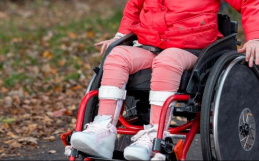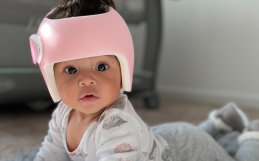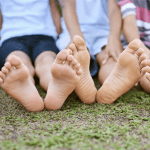When children of any age are referred to a Certified Orthotist for new leg braces, whether they are Ankle Foot Orthoses (AFO’s), Supra Malleolar Orthoses (SMO’s), Knee Orthoses (KO’s) or Knee Ankle Foot Orthoses (KAFO’s), there are a number of things that the orthotist can do to help the child not only stand and walk better, but to also aid in the psychological adaptation to the devices.
Make the Child Feel At Ease
This may sound like an obvious thing to do but it shouldn’t be taken for granted. Adults are often put to ease by a friendly introduction, a brief explanation of what the Orthotist will be doing and then getting to business with the assessment and imaging for the prescribed braces. The introduction to the child should not be rushed. Depending on their age it may involve sharing or playing with toys with them, talking about things they like such as sports or other activities they are involved in, and especially trying to find something you may share in common. Earning the child’s trust early in the process will go a long way if other parts of the bracing process make then feel at all anxious.
Include the Child in Conversations with Parents
Conversations between the Orthotist and the child’s parents or caregivers are always a valuable source of information, as it brings a different perspective to the child’s needs at home, at school and in the community. This information in conjunction with that from the other team members (Physician, Specialist, Physiotherapist) will keep the orthotic treatment focused on all aspects of that child’s needs. It is extremely important at this time to make all efforts to include the child in the conversation to confirm what their feelings are and to answer any questions they may have no matter how small or even off topic they might be. Even at a very young age children want to be included in choices about their care. This can include details about the brace design, especially the fun stuff like colours and graphics!
Give Children a Distraction to Keep them from being Anxious or Bored
One of the most important pieces of equipment in each of our clinical rooms is our computer. Yes we needed it for scheduling and clinical note taking, but access to the internet is invaluable to play the child’s favourite cartoons or shows. This can keep them happily occupied while working through parts of the assessment and casting or imaging process. It can also be useful to show the children pictures of braces, especially worn by other children so they can see they are not alone in having to wear them.
Colours, Graphics, Colours and More Graphics
Giving children ‘artistic licence’ when it comes to the colour of their braces, the graphics they might want to use on them, even the colour of the straps has proven to be invaluable to help them accept their new braces and a real chance to make them their own. Remember, it might not be a colour or a graphic design that you or even their parents like, but it is not you or their parents that have to wear them. We are fortunate today to have such a great selection and variety of graphic designs and colours to choose from. We are able to infuse the plastic that the braces are made from with colours, graphics, designs and tattoos that will not rub off, wash off or fade.
So for great bracing outcomes, talk to the children, make them comfortable, include them in the conversation. Above all, let them take ownership of their braces by letting them have their pick of colours and designs.
For more information about leg bracing for children or paediatric foot issues, contact the team at Applied Biomechanics in Guelph.






